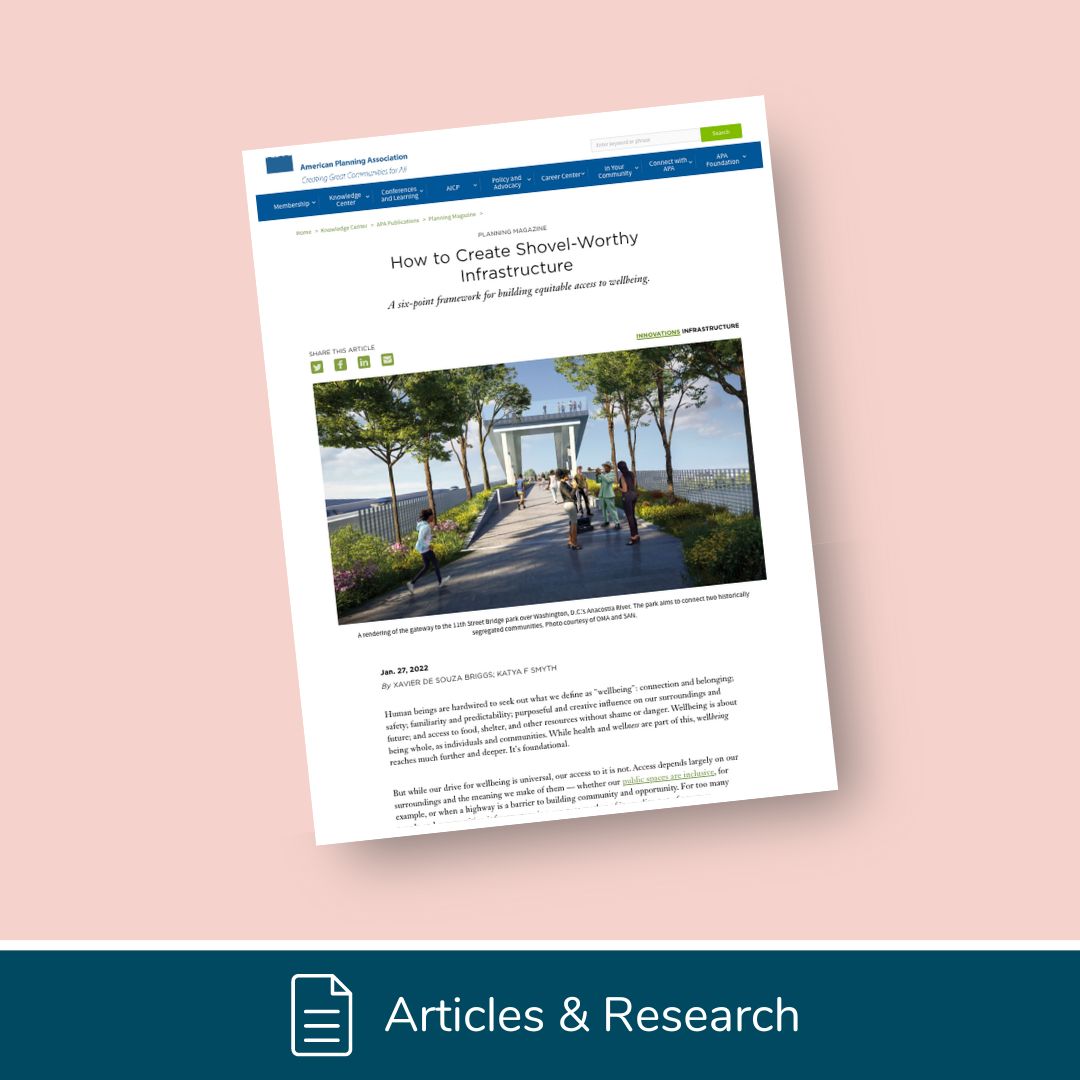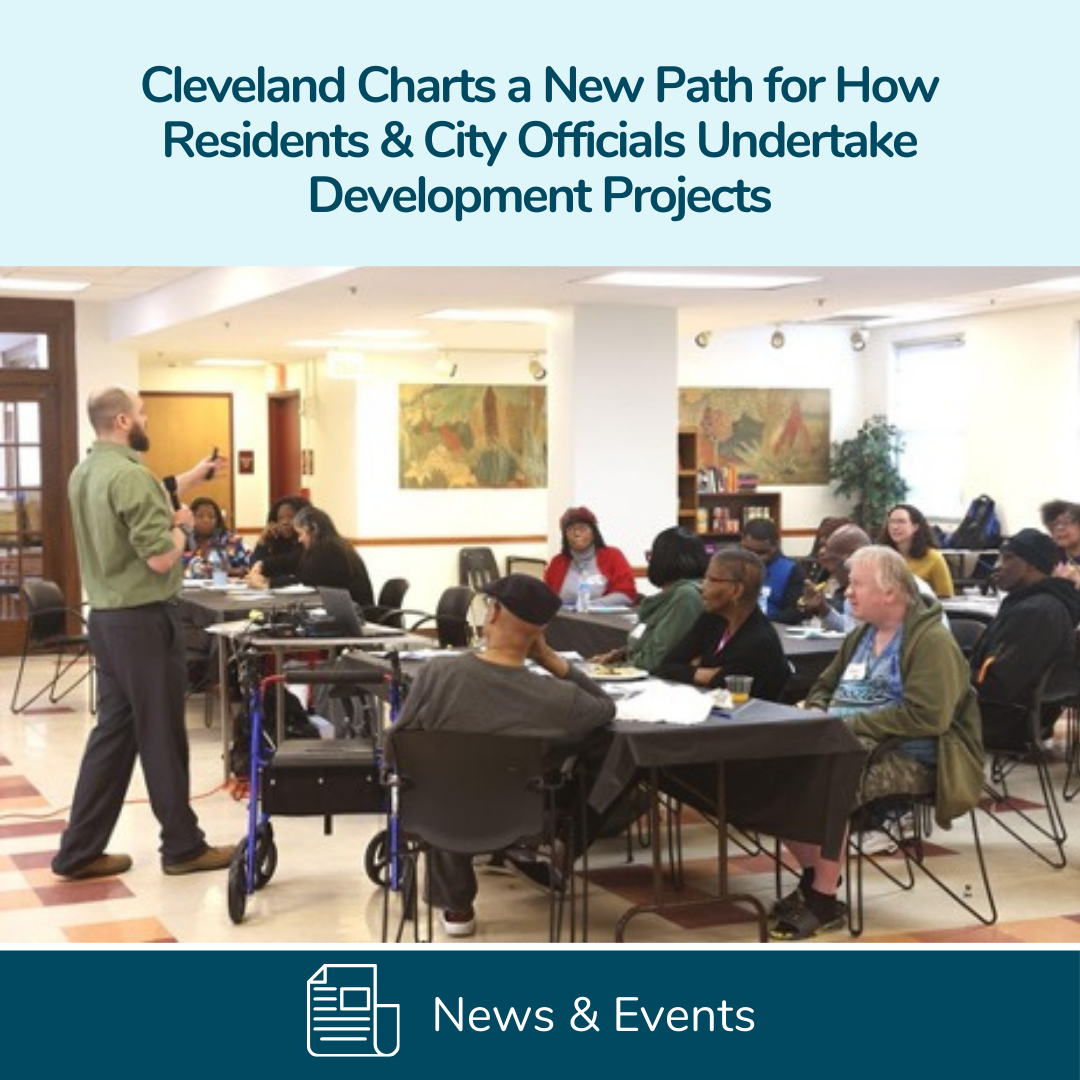The recently enacted infrastructure bill presents an opportunity to fix more than roads, bridges and pipes. As funds begin to land in cities across the country, city planners and policymakers have many options for how they choose to build. Let’s make sure equitable wellbeing is at the center of new infrastructure investments.
In a two-part series published by the American Planning Association, Brookings Senior Fellow Xavier de Souza Briggs and Full Frame Initiative CEO Katya Fels Smyth outline a framework to guide new capital investments. Grounded in principles from the Wellbeing Blueprint, this six-point framework shows how to plan and design a built environment that provides universal access to wellbeing.
Curious what this might look like? Browse our national wellbeing innovation map to see what these principles look like in practice in the built environment, human services, education and other sectors.
Read the Article Explore Innovations



